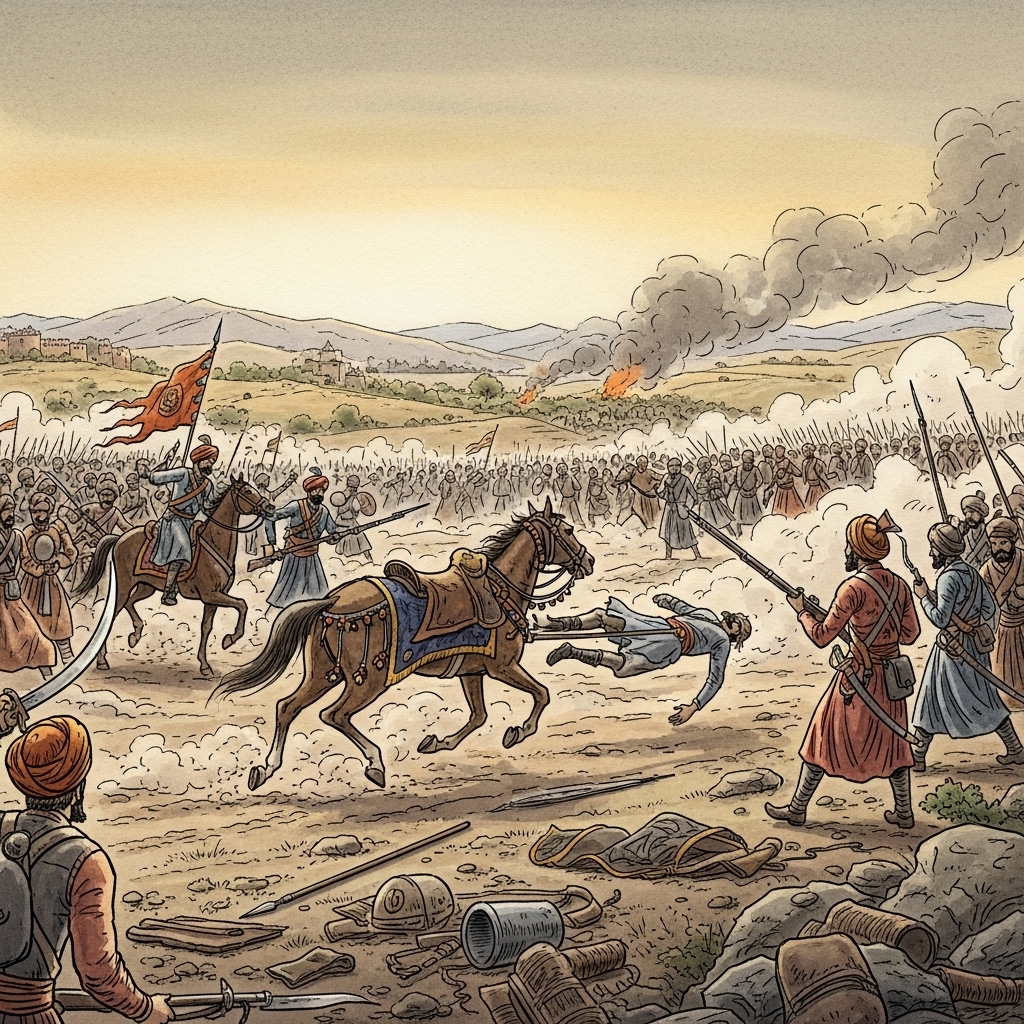⚖️ 1753 — The End of a Tyrant, Mir MannuThe ruthless Governor of Lahore, known for his brutal persecution of Sikhs, meets a dramatic and fateful end.

What happens when a merciless hunter becomes the hunted? Mir Mannu, the Governor of Lahore, earned a dark reputation for his campaign to exterminate the Sikhs. He was so feared that his name entered Punjabi folklore as a boogeyman. During one of his brutal campaigns, fate intervened in a shocking way. His own horse, startled, threw him to the ground. His foot became entangled in the stirrup, and the very horse he rode into battle dragged him to his death across the harsh terrain. For the Sikhs who had endured unimaginable suffering under his rule, Mannu's bizarre death was seen as divine justice. It became a powerful symbol of hope and resilience, reinforcing the belief that tyranny carries the seeds of its own destruction. The event bolstered Sikh morale during one of their darkest periods. The story of Mir Mannu's end serves as a historical lesson: no power is absolute, and oppression often ends in an inglorious fall.
|
